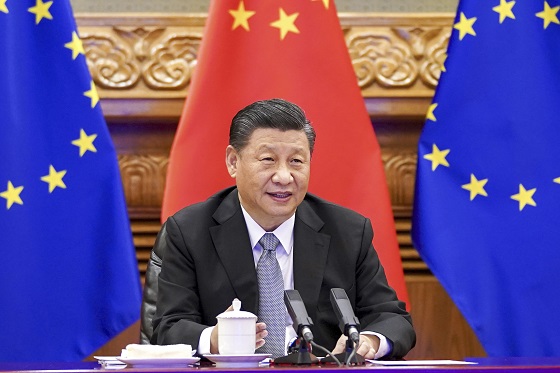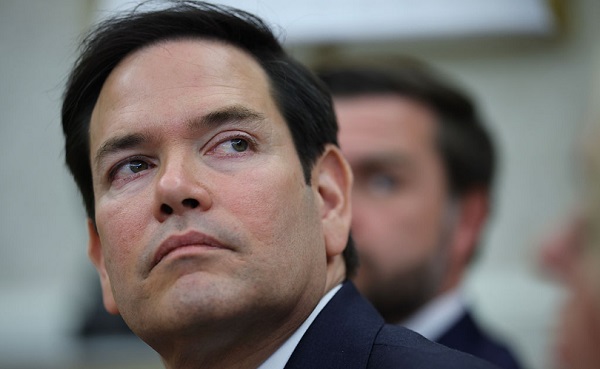Alberta
Update re: Sladjana Petrovic – New appeal to public from Yellowknife RCMP

From Northwest Territories RCMP.
Yellowknife RCMP update on missing woman, renew appeal
Yellowknife, NT, January 6, 2020
Yellowknife RCMP continue to seek the public’s assistance in locating a missing woman, Sladjana Petrovic, age 60.
Sladjana was reportedly last seen on December 26 in the downtown area. RCMP began a missing person investigation on December 27, when she was reported missing.
RCMP have issued pleas for assistance from the public since December 30, 2019. Today, they renew their request, and provide updated information.
Sladjana Petrovic, is described as Caucasian, 5’7” / 170 cm, 257 lbs / 117 kg, heavy build, shoulder length “salt and pepper” brown hair and blue eyes.
The investigation has produced the latest image, taken the day before her disappearance.
 Sladjana is seen wearing a dark blue jacket, with light blue liner, a pink or red shirt, black or dark pants, and running shoes. She appears to be carrying a grey/black bag or purse. It is believed Sladjana was wearing the same clothes when she was last seen.
Sladjana is seen wearing a dark blue jacket, with light blue liner, a pink or red shirt, black or dark pants, and running shoes. She appears to be carrying a grey/black bag or purse. It is believed Sladjana was wearing the same clothes when she was last seen.
The investigation confirms that Sladjana was last seen at approximately 3:40 pm on December 26, leaving her apartment building on 53 St and walking towards Franklin Avenue. She is believed to be wearing the dark blue jacket, red/pink shirt, dark pants and running shoes.
Investigators continue to canvas the area, as residences and businesses in the downtown area surrounding 53 Street may have video footage from security cameras, “Nest” cams and vehicle dash cams. Residents are asked to review their footage between the hours of 3 PM and midnight, December 26, 2019 and provide police with any sightings.
Yellowknife Ground Search and Rescue (YKGSAR) have been actively patrolling the downtown area, including back alleys and checking yards. Please be aware these patrols may continue.
Additional to the YKGSAR patrols and RCMP canvasses, downtown residents are asked to report anything that may appear unusual in their backyards and outbuildings
Sladjana has been known to visit Calgary and Edmonton in the past. RCMP Yellowknife Detachment is working with partner agencies in Alberta. The media release was shared with Alberta, should Sladjana be making her way from Yellowknife to Alberta.
The investigators of Yellowknife RCMP General Investigative Section continue to work on this priority investigation. They have been supported by the NT RCMP Police Dog Services, Yellowknife RCMP and resources from other units as required. At this time, despite the dedicated, multi-level police investigation, there have been no confirmed sightings, interactions or activity from Sladjana Petrovic since she was last seen on December 26, 2019 at 3:40 pm.
“Our investigators continue to work around the clock to locate Ms. Petrovic. We are concerned for her well-being, and any pieces of information can assist, so please contact us with any information you may have. Our investigatorsare are following every possible lead to locate Ms. Petrovic” states Inspector Alex Laporte, Yellowknife RCMP Detachment Commander.
Anyone with information on whereabouts of Sladjana Petrovic is asked to contact either Yellowknife RCMP at 867-669-1111 or Crime Stoppers at 1-800-222-TIPS, nwtnutips.com, (click on “submit a web tip”) or text: nwtnutips to 274637.
Alberta
Red Deer Justice Centre Grand Opening: Building access to justice for Albertans

The new Red Deer Justice Centre will help Albertans resolve their legal matters faster.
Albertans deserve to have access to a fair, accessible and transparent justice system. Modernizing Alberta’s courthouse infrastructure will help make sure Alberta’s justice system runs efficiently and meets the needs of the province’s growing population.
Alberta’s government has invested $191 million to build the new Red Deer Justice Centre, increasing the number of courtrooms from eight to 12, allowing more cases to be heard at one time.
“Modern, accessible courthouses and streamlined services not only strengthen our justice
system – they build safer, stronger communities across the province. Investing in the new Red Deer Justice Centre is vital to helping our justice system operate more efficiently, and will give people in Red Deer and across central Alberta better access to justice.”

Government of Alberta and Judiciary representatives with special guests at the Red Deer Justice Centre plaque unveiling event April 22, 2025.
On March 3, all court services in Red Deer began operating out of the new justice centre. The new justice centre has 12 courtrooms fully built and equipped with video-conference equipment to allow witnesses to attend remotely if they cannot travel, and vulnerable witnesses to testify from outside the courtroom.
The new justice centre also has spaces for people taking alternative approaches to the traditional courtroom trial process, with the three new suites for judicial dispute resolution services, a specific suite for other dispute resolution services, such as family mediation and civil mediation, and a new Indigenous courtroom with dedicated venting for smudging purposes.
“We are very excited about this new courthouse for central Alberta. Investing in the places where people seek justice shows respect for the rights of all Albertans. The Red Deer Justice Centre fills a significant infrastructure need for this rapidly growing part of the province. It is also an important symbol of the rule of law, meaning that none of us are above the law, and there is an independent judiciary to decide disputes. This is essential for a healthy functioning democracy.”
“Public safety and access to justice go hand in hand. With this investment in the new Red Deer Justice Centre, Alberta’s government is ensuring that communities are safer, legal matters are resolved more efficiently and all Albertans get the support they need.”
“This state-of-the-art facility will serve the people of Red Deer and surrounding communities for generations. Our team at Infrastructure is incredibly proud of the work done to plan, design and build this project. I want to thank everyone, at all levels, who helped make this project a reality.”
Budget 2025 is meeting the challenge faced by Alberta with continued investments in education and health, lower taxes for families and a focus on the economy.

Quick facts
- The new Red Deer Justice Centre is 312,000 sq ft (29,000 m2). (The old courthouse is 98,780 sq ft (9,177 m2)).
- The approved project funding for the Red Deer Justice Centre is about $191 million.
Alberta
CPP another example of Albertans’ outsized contribution to Canada

From the Fraser Institute
By Tegan Hill
Amid the economic uncertainty fuelled by Trump’s trade war, its perhaps more important than ever to understand Alberta’s crucial role in the federation and its outsized contribution to programs such as the Canada Pension Plan (CPP).
From 1981 to 2022, Albertan’s net contribution to the CPP—meaning the amount Albertans paid into the program over and above what retirees in Alberta received in CPP payments—was $53.6 billion. In 2022 (the latest year of available data), Albertans’ net contribution to the CPP was $3.0 billion.
During that same period (1981 to 2022), British Columbia was the only other province where residents paid more into the CPP than retirees received in benefits—and Alberta’s contribution was six times greater than B.C.’s contribution. Put differently, residents in seven out of the nine provinces that participate in the CPP (Quebec has its own plan) receive more back in benefits than they contribute to the program.
Albertans pay an outsized contribution to federal and national programs, including the CPP because of the province’s relatively high rates of employment, higher average incomes and younger population (i.e. more workers pay into the CPP and less retirees take from it).
Put simply, Albertan workers have been helping fund the retirement of Canadians from coast to coast for decades, and without Alberta, the CPP would look much different.
How different?
If Alberta withdrew from the CPP and established its own standalone provincial pension plan, Alberta workers would receive the same retirement benefits but at a lower cost (i.e. lower CPP contribution rate deducted from our paycheques) than other Canadians, while the contribution rate—essentially the CPP tax rate—to fund the program would likely need to increase for the rest of the country to maintain the same benefits.
And given current demographic projections, immigration patterns and Alberta’s long history of leading the provinces in economic growth, Albertan workers will likely continue to pay more into the CPP than Albertan retirees get back from it.
Therefore, considering Alberta’s crucial role in national programs, the next federal government—whoever that may be—should undo and prevent policies that negatively impact the province and Albertans ability to contribute to Canada. Think of Bill C-69 (which imposes complex, uncertain and onerous review requirements on major energy projects), Bill C-48 (which bans large oil tankers off B.C.’s northern coast and limits access to Asian markets), an arbitrary cap on oil and gas emissions, numerous other “net-zero” targets, and so on.
Canada faces serious economic challenges, including a trade war with the United States. In times like this, it’s important to remember Alberta’s crucial role in the federation and the outsized contributions of Alberta workers to the wellbeing of Canadians across the country.
-

 2025 Federal Election13 hours ago
2025 Federal Election13 hours agoStudy links B.C.’s drug policies to more overdoses, but researchers urge caution
-

 2025 Federal Election2 days ago
2025 Federal Election2 days agoPolice Associations Endorse Conservatives. Poilievre Will Shut Down Tent Cities
-

 Alberta2 days ago
Alberta2 days agoRed Deer Justice Centre Grand Opening: Building access to justice for Albertans
-

 Business1 day ago
Business1 day agoTrump: China’s tariffs to “come down substantially” after negotiations with Xi
-

 conflict1 day ago
conflict1 day agoMarco Rubio says US could soon ‘move on’ from Ukraine conflict: ‘This is not our war’
-

 Business1 day ago
Business1 day agoChinese firm unveils palm-based biometric ID payments, sparking fresh privacy concerns
-

 2025 Federal Election2 days ago
2025 Federal Election2 days agoMark Carney Wants You to Forget He Clearly Opposes the Development and Export of Canada’s Natural Resources
-

 International23 hours ago
International23 hours agoPope Francis Got Canadian History Wrong





